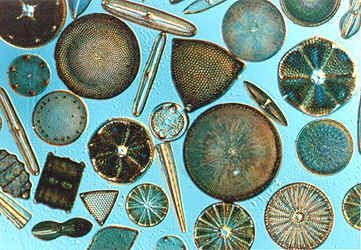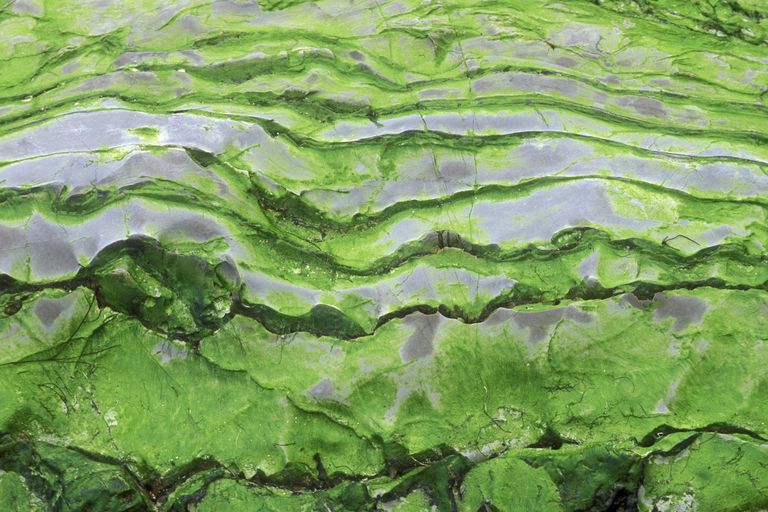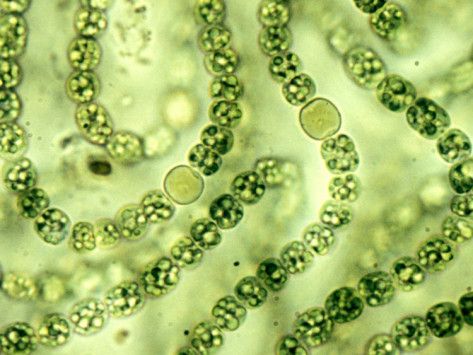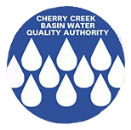Phytoplankton
Highlights:
In 2022 there were multiple severe blooms at Cherry Creek Reservoir and closures to contact were required based on toxin production.
Although cyanobacteria (blue-green algae) represented the highest populations during WY 2022, they normally represent a small percentage of the total biovolume.
Phytoplankton are photosynthetic organisms that are the primary producers in aquatic systems. They form the base of aquatic food chains and are grazed upon by zooplankton and herbivorous fish. A healthy lake should support a diverse assemblage of phytoplankton, in which many algal groups are represented.
Phytoplankton and zooplankton data continued to exhibit characteristics of an over-productive and nutrient-rich reservoir, as indicated by WY 2022 planktonic communities. WY 2022 phytoplankton populations in Cherry Creek Reservoir were very diverse, with an average of thirty three species, which was lower than the last three years which averaged forty species. The most abundant phytoplankton taxa were Cyanophyta, commonly referred to as “blue-green algae” (or cyanobacteria, depicted in red), which are of concern, but also many Chlorophyta (“green algae”, depicted in green), and Bacillariophyta (diatoms, shown in blue) which are both considered to be good or beneficial algae.
Cyanophytes may be responsible for the majority of algal blooms that occur in freshwater ecosystems based on competitive advantage over other groups of phytoplankton. Several species of cyanobacteria that can produce toxins were responsible for the severe blooms seen in Cherry Creek Reservoir during WY 2022 including: Aphanizomenon flos-aquae (June and July 2022), Dolichospermum sp. (May through July 2022), Microcystis aeruginosa (June and July 2022), and Pseudoanabaena limnetica (October through December 2021, and April and September 2022).
These potentially toxin-producing species were present at higher concentrations and biovolumes during WY 2022 than in previous years. The Reservoir was closed to contact by Colorado Parks and Wildlife (CPW) during the bloom in late June due to cyanotoxin detection above the recreational threshold. Although the bloom in July resulted in higher chlorophyll α, toxins were not detected.
Useful Links

Phytoplankton Concentrations and Biovolumes
info_outlineEach point on this graph represents a sampling event. The y-axis represents the concentration (number) and the size of the bubble represents the biovolume (size). The colors represent different zooplankton groups. Use the filters to target a specific group or date. To learn more about a specific data point, hover over it with your mouse.

- Typically the first algae to bloom in early spring; when nutrients and light conditions in upper mixed layer are right, their competitive edge and rapid growth rate allows them to dominate phytoplankton.
- Important contributors to the food chain; food resource for zooplankton
- Freshwater diatoms commonly observed in reservoir are indicators of eutrophic (over-enriched) conditions; their degradation contributes to increased oxygen demand and phosphorus recycling

- Appear during periods of high nutrient concentrations; indicates both nitrogen and phosphorus are in excess supply
- Colonial and single-celled greens are a good food source for zooplankton
- Filamentous and large colonial greens do not add to food web, and create water quality problems

- Appear during periods of over-abundant enrichment and with very high nutrient levels, especially phosphorus
- Do not contribute greatly to food web; few people view cyanobacteria as beneficial organisms in a lake
- Create water quality problems; e.g., oxygen depletion when excessive growth produces blooms
- Some species may produce cyanotoxins under certain conditions

- Cryptophytes can live through the winter, under ice-cover and with little solar radiation for photosynthesis
- Important food for zooplankton; zooplankton, in turn, are food for fish and other organisms in food web
